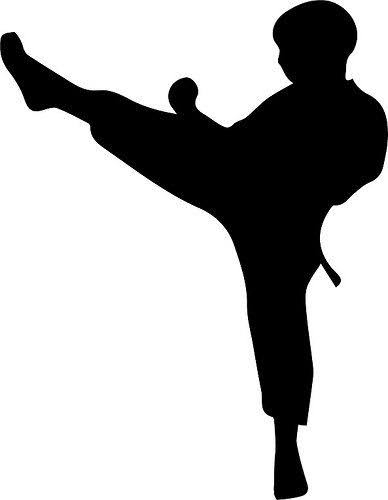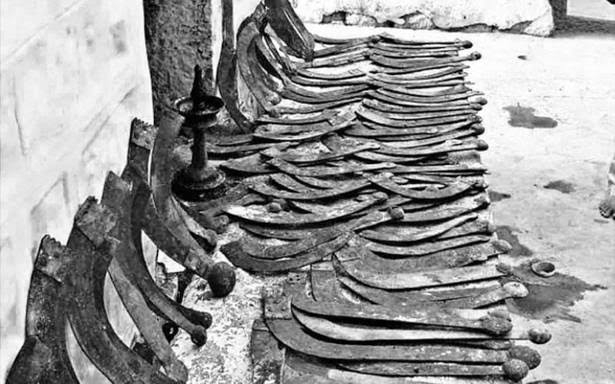The Origin of Karate: A Journey Through Time
The Origin of Karate: A Journey Through Time
Karate, a martial art known for its powerful strikes and disciplined training regimen, is deeply rooted in the history and culture of Okinawa, Japan. This art form, which translates to "empty hand," has evolved over centuries, influenced by various cultures and practices. Understanding the origin of karate requires a journey back in time to explore the historical, cultural, and social contexts that shaped it.
The story of karate begins on the small, subtropical islands of Okinawa, situated between Japan and China. Historically, Okinawa was part of the Ryukyu Kingdom, which had strong trading relationships with neighboring countries, particularly China. These interactions were instrumental in the development of Okinawan martial arts.
In the 14th century, the Ryukyu Kingdom began to engage in tributary relations with China. This exchange brought not only goods and ideas but also martial arts techniques. Chinese martial arts, particularly those practiced in the Fujian province, had a profound influence on the development of Okinawan fighting systems. This period saw the blending of native Okinawan techniques with Chinese martial arts, giving rise to what would eventually become karate.
The influence of Chinese martial arts on Okinawan fighting techniques cannot be overstated. During the Ming Dynasty (1368-1644), Chinese martial artists traveled to Okinawa, bringing with them knowledge of various fighting styles. One of the most significant contributions was the Chinese art of kenpo (拳法), which means "fist method."
Kenpo introduced the concept of using both hands and feet in combat, a principle that became central to Okinawan martial arts. Over time, these techniques were adapted and refined by Okinawan practitioners, leading to the development of distinct styles. Notably, the integration of Chinese breathing techniques and the focus on internal energy (qi) became key components of Okinawan training methods.
In 1609, the Satsuma clan of Japan invaded and conquered the Ryukyu Kingdom. This occupation had a significant impact on the development of karate. The Satsuma imposed strict bans on weapons, forcing the Okinawan people to develop and refine their unarmed combat techniques. This period of weapon prohibition led to the practice of karate as a means of self-defense.
During this time, the art began to be referred to as "Toudi" or "To-te," meaning "Chinese hand," reflecting its Chinese influences. However, as the art continued to evolve, it increasingly incorporated native Okinawan elements, distinguishing it from its Chinese origins.
The 19th and early 20th centuries were pivotal in the transformation of karate into its modern form. Key figures in this evolution include Sokon Matsumura, Anko Itosu, and Gichin Funakoshi. These masters played crucial roles in systematizing and promoting karate.
Sokon Matsumura, a martial artist who served as a bodyguard for the Okinawan royal family, is credited with developing the Shuri-te style, one of the three main styles of Okinawan karate. His teachings emphasized strong stances, powerful strikes, and a disciplined approach to training.
Anko Itosu, a student of Matsumura, further systematized karate by introducing it into the Okinawan school system. Itosu believed that karate could be a valuable tool for physical education and character development. He created the Pinan kata, a series of training forms that are still practiced today, to make karate more accessible to students.
Gichin Funakoshi, often referred to as the father of modern karate, was instrumental in bringing karate to mainland Japan. In 1922, he demonstrated karate in Tokyo, capturing the interest of the Japanese martial arts community. Funakoshi emphasized the philosophical and spiritual aspects of karate, promoting it as a way of life rather than merely a fighting technique. He also changed the characters used to write "karate" from "Chinese hand" to "empty hand," symbolizing the art's evolution and its focus on spiritual and moral development.
After World War II, karate spread beyond Japan, gaining popularity worldwide. American servicemen stationed in Okinawa during the post-war occupation were introduced to karate, and many brought their knowledge back to the United States. This period also saw the establishment of karate dojos (training halls) in Europe and other parts of the world.
The global spread of karate was facilitated by international organizations such as the Japan Karate Association (JKA), founded by Gichin Funakoshi's students. The JKA played a significant role in standardizing karate techniques, competition rules, and grading systems. Today, karate is practiced by millions of people across the globe, with various styles and schools reflecting its diverse history and influences.
Karate is more than just a physical discipline; it is deeply rooted in philosophy and ethics. The Dojo Kun, or training hall rules, encapsulate the moral principles that guide karate practice. These principles emphasize respect, humility, perseverance, and self-control.
Karate training aims to cultivate both the mind and body, fostering a balanced and harmonious approach to life. The practice of kata, pre-arranged forms that simulate combat scenarios, serves as a meditative exercise, helping practitioners develop focus, discipline, and inner peace.
The origin of karate is a rich tapestry woven from the threads of Okinawan culture, Chinese martial arts, and Japanese influences. From its early beginnings in the Ryukyu Kingdom to its evolution into a global phenomenon, karate has undergone significant transformations while maintaining its core principles. Today, karate stands as a testament to the enduring human spirit, embodying a tradition of discipline, respect, and self-improvement. Whether practiced for self-defense, physical fitness, or spiritual growth, karate continues to inspire and empower individuals around the world, honoring its storied past while embracing the future.









